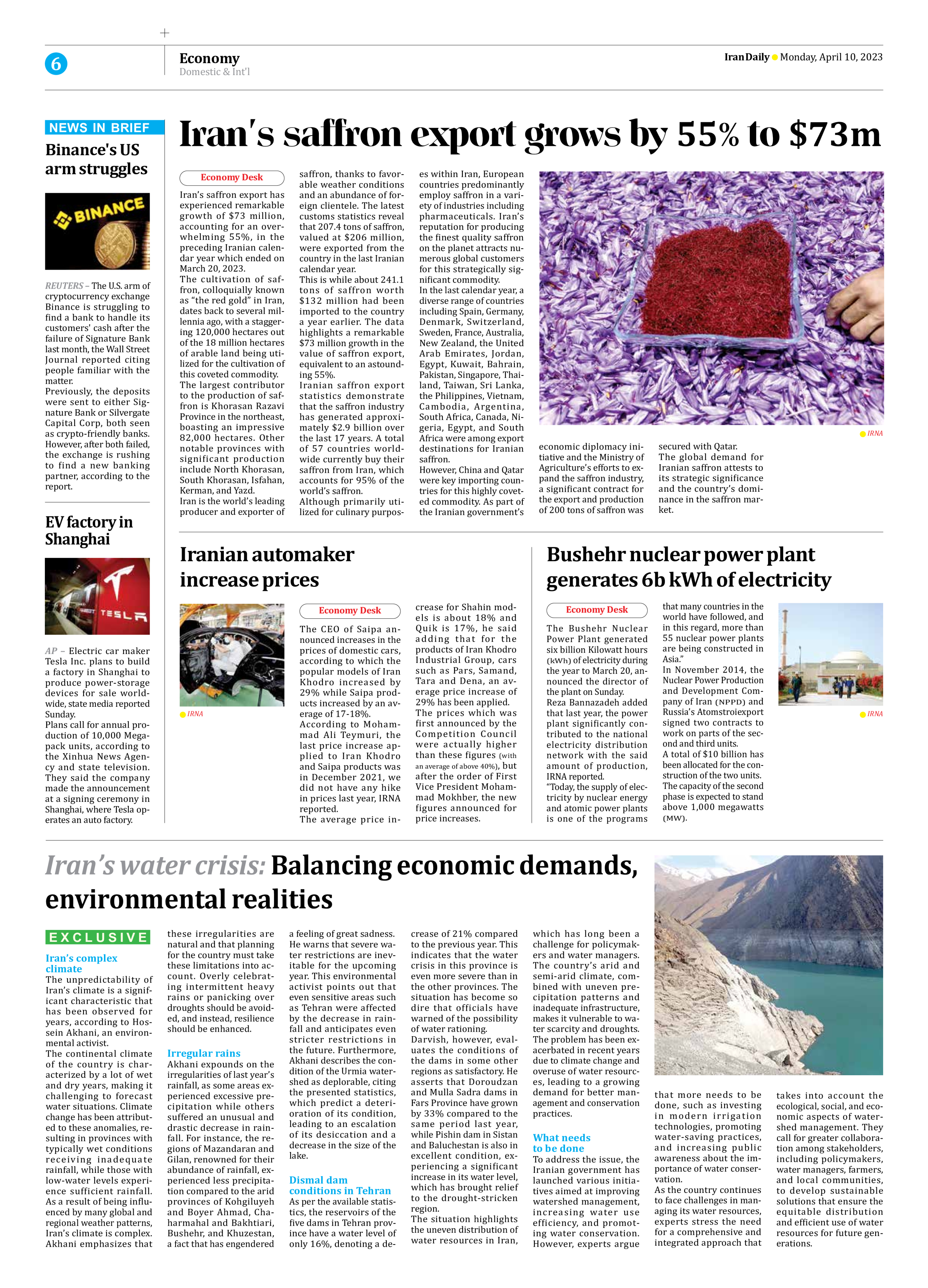
Iran’s saffron export grows by 55% to $73m
Iran’s saffron export has experienced remarkable growth of $73 million, accounting for an overwhelming 55%, in the preceding Iranian calendar year which ended on March 20, 2023.
The cultivation of saffron, colloquially known as “the red gold” in Iran, dates back to several millennia ago, with a staggering 120,000 hectares out of the 18 million hectares of arable land being utilized for the cultivation of this coveted commodity.
The largest contributor to the production of saffron is Khorasan Razavi Province in the northeast, boasting an impressive 82,000 hectares. Other notable provinces with significant production include North Khorasan, South Khorasan, Isfahan, Kerman, and Yazd.
Iran is the world’s leading producer and exporter of saffron, thanks to favorable weather conditions and an abundance of foreign clientele. The latest customs statistics reveal that 207.4 tons of saffron, valued at $206 million, were exported from the country in the last Iranian calendar year.
This is while about 241.1 tons of saffron worth $132 million had been imported to the country a year earlier. The data highlights a remarkable $73 million growth in the value of saffron export, equivalent to an astounding 55%.
Iranian saffron export statistics demonstrate that the saffron industry has generated approximately $2.9 billion over the last 17 years. A total of 57 countries worldwide currently buy their saffron from Iran, which accounts for 95% of the world’s saffron.
Although primarily utilized for culinary purposes within Iran, European countries predominantly employ saffron in a variety of industries including pharmaceuticals. Iran’s reputation for producing the finest quality saffron on the planet attracts numerous global customers for this strategically significant commodity.
In the last calendar year, a diverse range of countries including Spain, Germany, Denmark, Switzerland, Sweden, France, Australia, New Zealand, the United Arab Emirates, Jordan, Egypt, Kuwait, Bahrain, Pakistan, Singapore, Thailand, Taiwan, Sri Lanka, the Philippines, Vietnam, Cambodia, Argentina, South Africa, Canada, Nigeria, Egypt, and South Africa were among export destinations for Iranian saffron.
However, China and Qatar were key importing countries for this highly coveted commodity. As part of the Iranian government’s economic diplomacy initiative and the Ministry of Agriculture’s efforts to expand the saffron industry, a significant contract for the export and production of 200 tons of saffron was secured with Qatar.
The global demand for Iranian saffron attests to its strategic significance and the country’s dominance in the saffron market.







